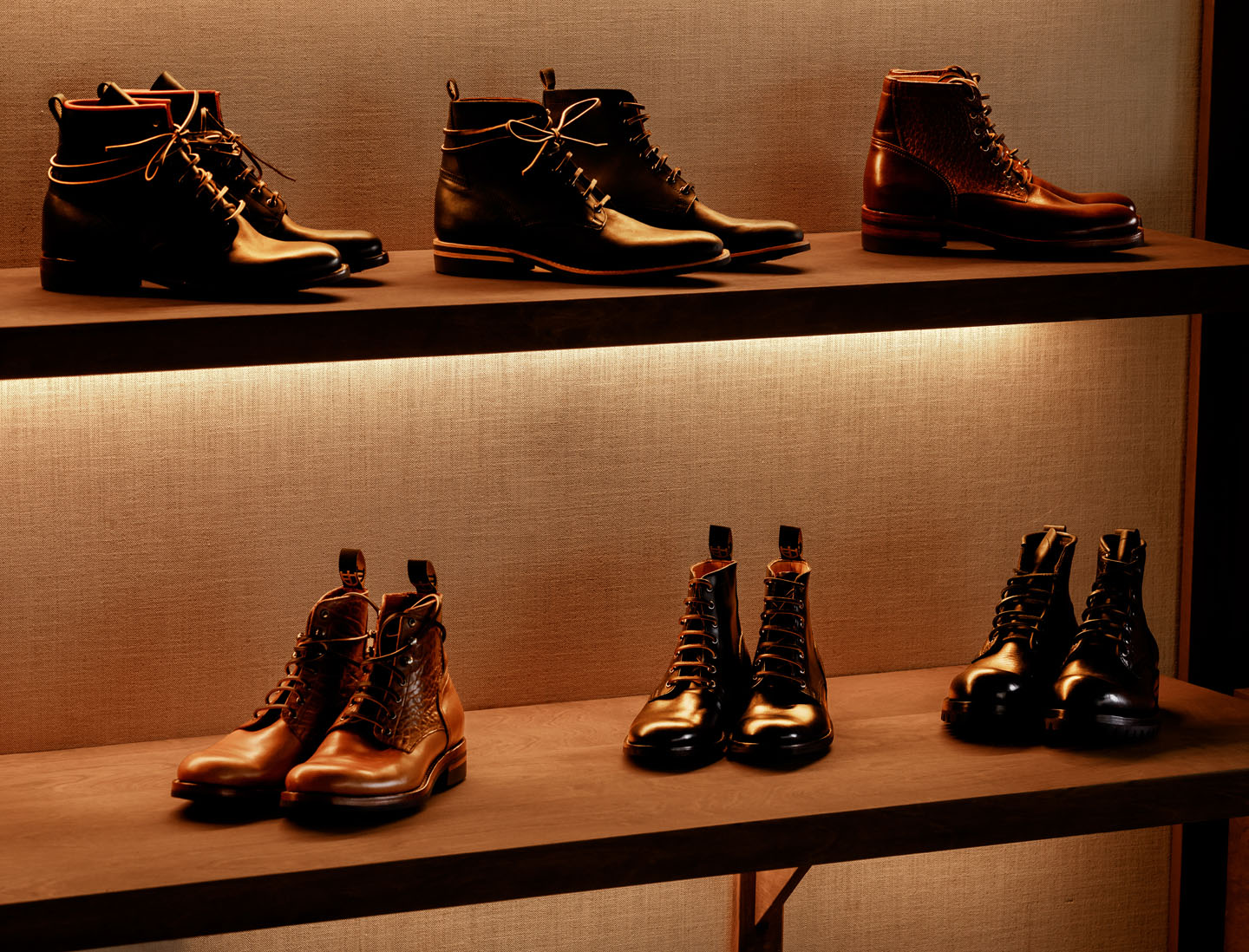“No ordinary person would come to my shop,” David Shafiee says with a twinkle in his eye. At the busy intersection of Nanaimo Street and East 1st Avenue, with two gas stations and a 7-11 on the other three corners, the HD Russell Boots storefront is easy to overlook. Inside, however, awaits some of the most elegant handcrafted footwear in the city.
Customers who venture through the shop’s front door find themselves in a boutique with wood floors, regal-looking chairs, and natural light flooding in through expansive windows. The lovingly displayed shoes and boots are starting points for Shafiee’s real business—his made-to-measure creations.
A charismatic storyteller who pauses only occasionally, searching for the correct word in English, Shafiee zips effortlessly between anecdotes: describing how he designed boots for Ryan Reynolds to wear in Deadpool 2, telling an old Farsi tale to emphasize the importance of training staff properly, recounting a prank he once pulled on a boorish co-worker.
“That is so immature,” says Jennifer Low, the woman Shafiee calls his partner in life and business, but she smiles as she says it.
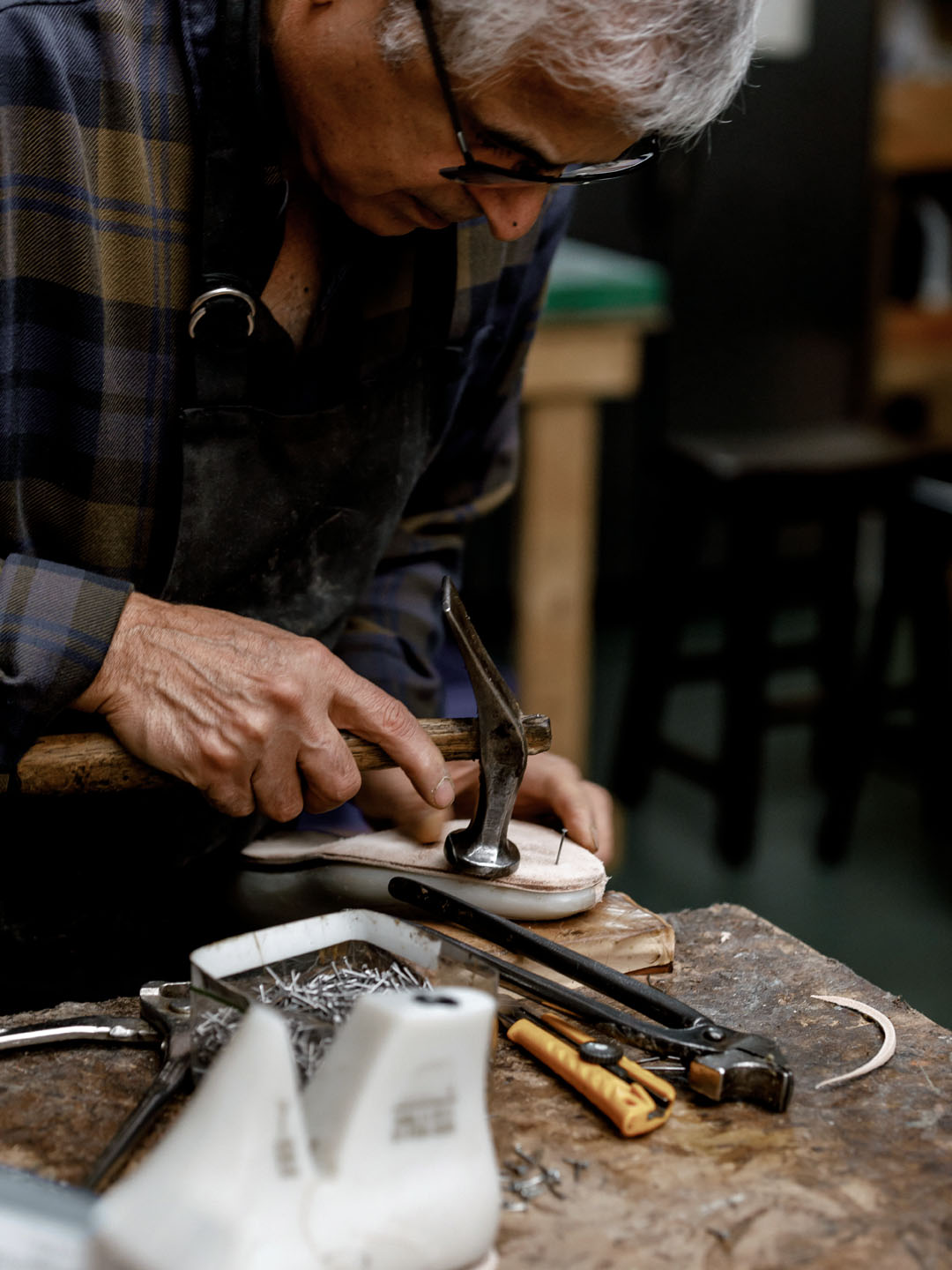
Before trimming the leather insole with a blade, Shafiee attaches it to a last with three temporary nails.
Shafiee’s bestselling style is the Russell, a sleek and casual walking boot based on a “very weird and strange drawing” his older brother Russell once made. Russell disappeared in 2003 in their home country of Iran. “Everyone assumes he’s dead,” Shafiee says. It took more than a decade before he could accept this bleak truth about his brother, and then grief overwhelmed him. “I took that grieving, that is all negative energy, and I wanted to create something that I can think of him, and for him to be with me.” Countless Vancouverites now own versions of the boots that honour Russell’s memory, but no two pairs are identical. Each bespoke pair is carefully crafted by Shafiee on the premises.
***
The first step in making custom footwear is measuring the customer’s feet. After 40 years in the business, Shafiee can tell someone’s shoe size at a glance—from as far away as across the street, he says—but he painstakingly traces each foot onto a piece of paper, noting measurements such as length, widths at various points, and arch height. If a foot seems unusual, he also snaps photos of it and shoots a quick video.
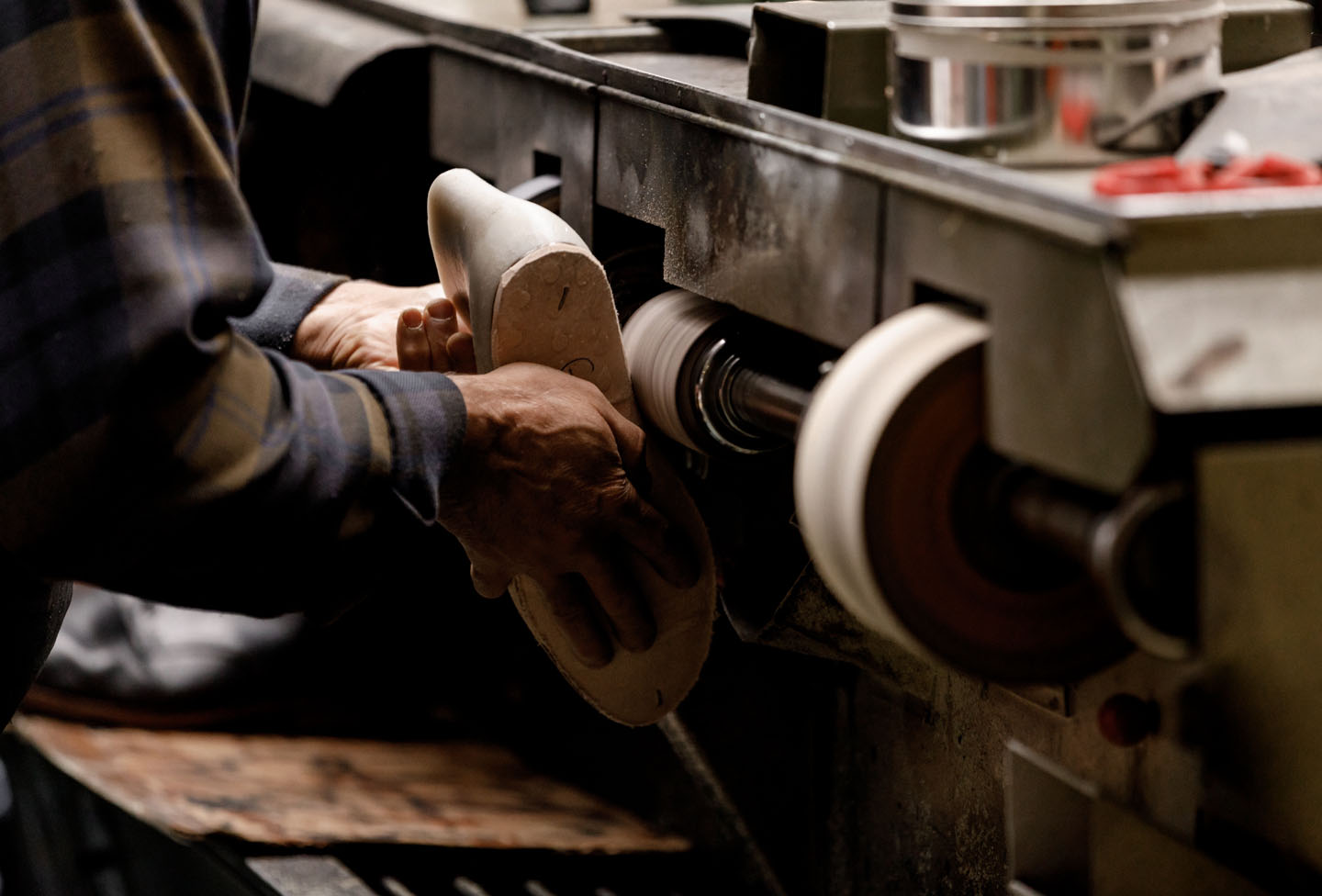
Shafiee sands the insole to more precisely match the shape of the last.
Then the customer selects a style—sometimes one on display, sometimes one inspired by a beloved old pair of shoes or boots, and sometimes a new style that springs from the customer’s imagination. His customers, Shafiee explains, are seeking something different, and they “don’t want to be like everybody else.” Even if they choose a standard style, they can customize everything from the colour, laces, stitching, and toe shape to the buckles, soles, heel height, and type of leather. “I give you my recommendation, and you tell me what you want. I’ll make it.”
The rest of the shoemaking process takes place behind the swinging half-doors that lead to the shop’s expansive back area. The workshop is filled with an enchanting mix of loud and dusty century-old machines interspersed with a few anachronistic-looking modern sewing machines. Shafiee gestures toward one of the oldest machines. “Those people who engineered that, really they were ahead of their time,” he says. Low explains that figuring out how to maintain the antique machinery is almost as important to a shoemaker as drafting the patterns and constructing the footwear.
Shoes and boots in various stages of production neatly line the metal shelves, alongside stacks of soles waiting to be affixed and bolts of leather in an array of earth tones. In the back corner, wooden shelves house shoe lasts in every conceivable size. Shafiee plucks one off the shelf and points out where he has modified it, adding layers of leather in one spot to mimic a bunion—creating, in effect, a custom mould for someone who was unable to find properly fitting footwear. So far, this customer has purchased four custom pairs.
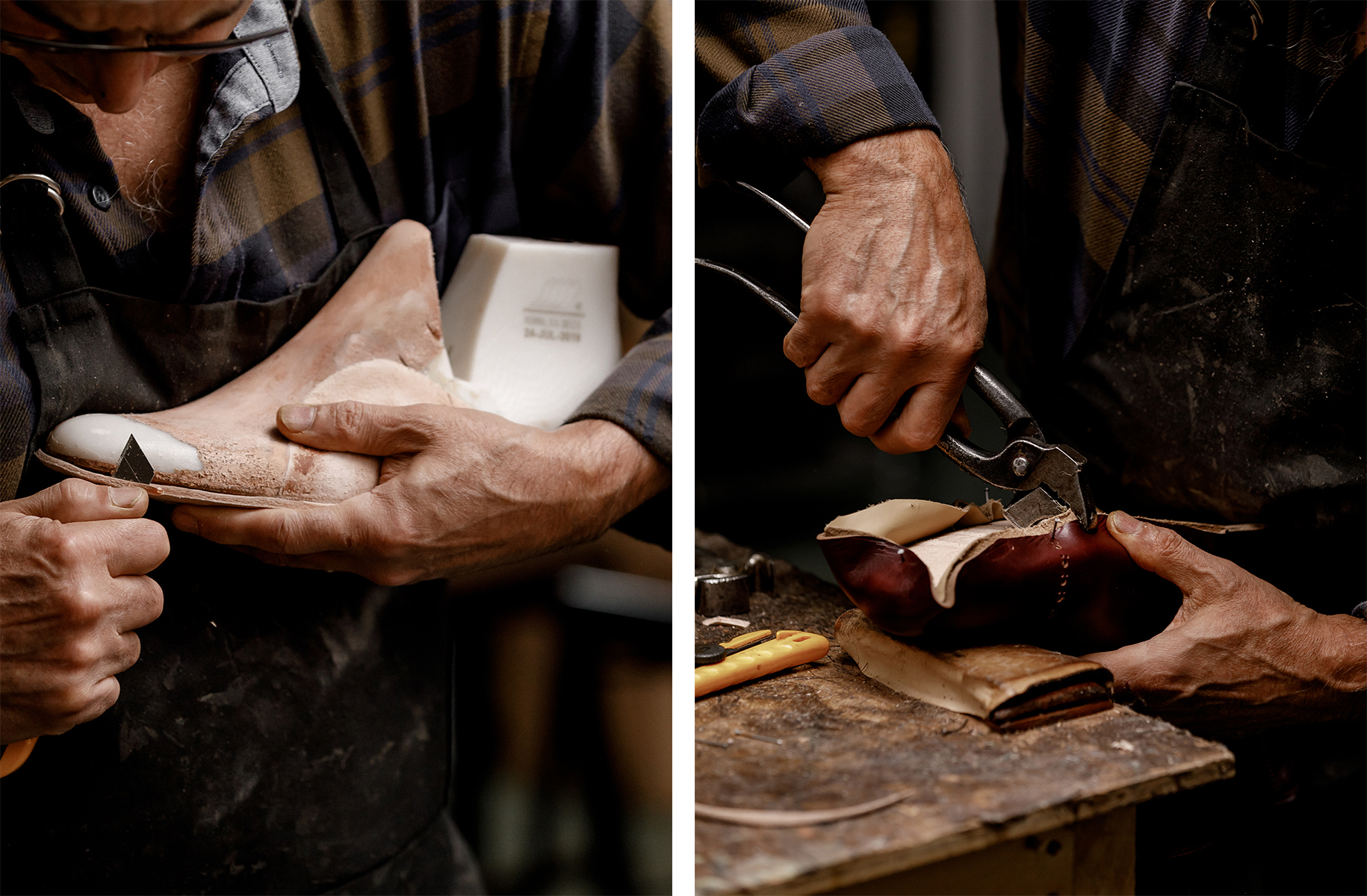
Other lasts modified to fit individual customers spill from the surrounding shelves, and Shafiee barely has to glance at one to identify the person and their unique foot characteristics. By modifying standard plastic lasts instead of building custom moulds from scratch using plaster, he says he saves each customer several thousand dollars.
He also eschews modern computer-generated pattern-making processes and simply draws paper patterns freehand. Low enjoys watching this part of his process. “It just boggles my mind that there’s no computer. There’s no Illustrator. There’s no AutoCAD,” she says. “Something happens in his brain that converts this flat piece of material and accounts for all of the variances in the shoe.”
“How about we eliminate anything plastic that is inside our footwear? I really feel my feet need to breathe.”
For the uppers, only full-grain leather, usually sourced from Horween in Chicago, is used. The material can cost up to 10 times as much as cheaper alternatives from Mexico, but Shafiee insists it’s worth it. The premium-leather insoles and uppers make his footwear both breathable and water-resistant—and comfortable without socks.
“How about we eliminate anything plastic that is inside our footwear?” he asks. “I really feel my feet need to breathe.”
He then shapes the leather around the last and painstakingly stitches the welt in place. This strip of leather runs around the shoe’s perimeter, and stitching it by hand requires incredible strength—“the power of a lion,” he says with a laugh. Companies that crank out cheap footwear use glue because it’s easier and costs less, but Shafiee insists on stitching his creations together. “It cannot separate,” he says. “It’s just there forever.”
After the sole and heel are attached, and any excess material is trimmed off, the finished footwear is sanded until smooth and then polished. From start to finish, the whole process takes a minimum of five to 10 hours for straightforward styles. Shafiee gestures toward the complicated decorative stitching on one pair of boots. “Just doing that stitch is two hours.”
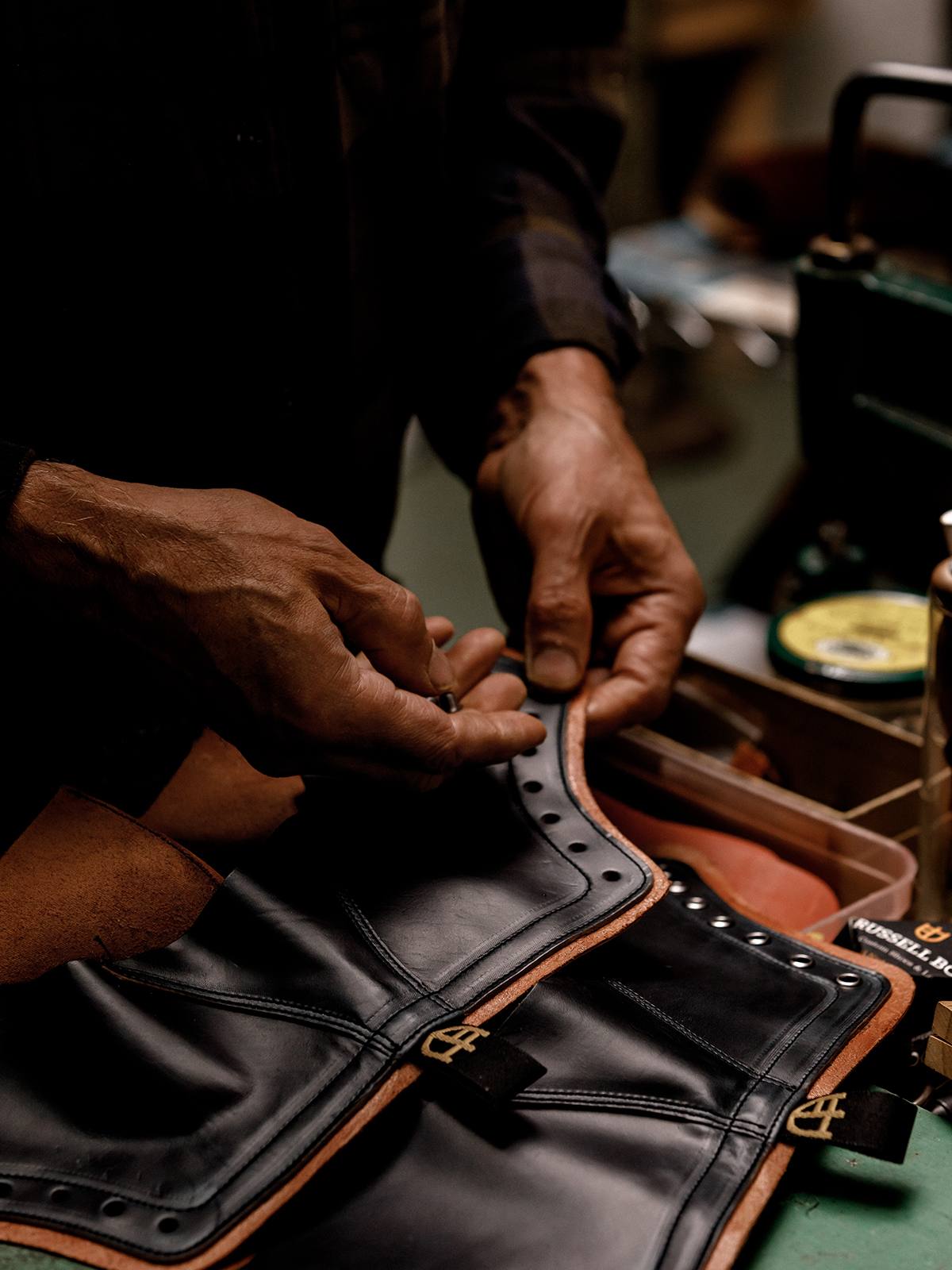
Eyelets are placed in the boot by hand, to be pressed later with a hand-crank eyelet installer.
When Shafiee moves out of earshot, tending to a noisy machine at the back of the workshop, Low points at another pair of boots and quietly explains that he remade them more than once—with mounting frustration and more than a little cursing—after his initial attempts didn’t meet his own high standards. “He ripped the whole thing apart,” she says. “He’ll just redo it until it’s right.”
Shafiee’s pride in his work is evident, so it’s surprising to learn that he never intended to become a bootmaker. Growing up in Iran, he wanted to study electrical engineering, but after the 1979 revolution put an end to his schooling, he decided to follow in the footsteps of his shoemaking uncles. “I see there’s no other choice,” he says. “There’s survival.” He spent much time watching and learning.
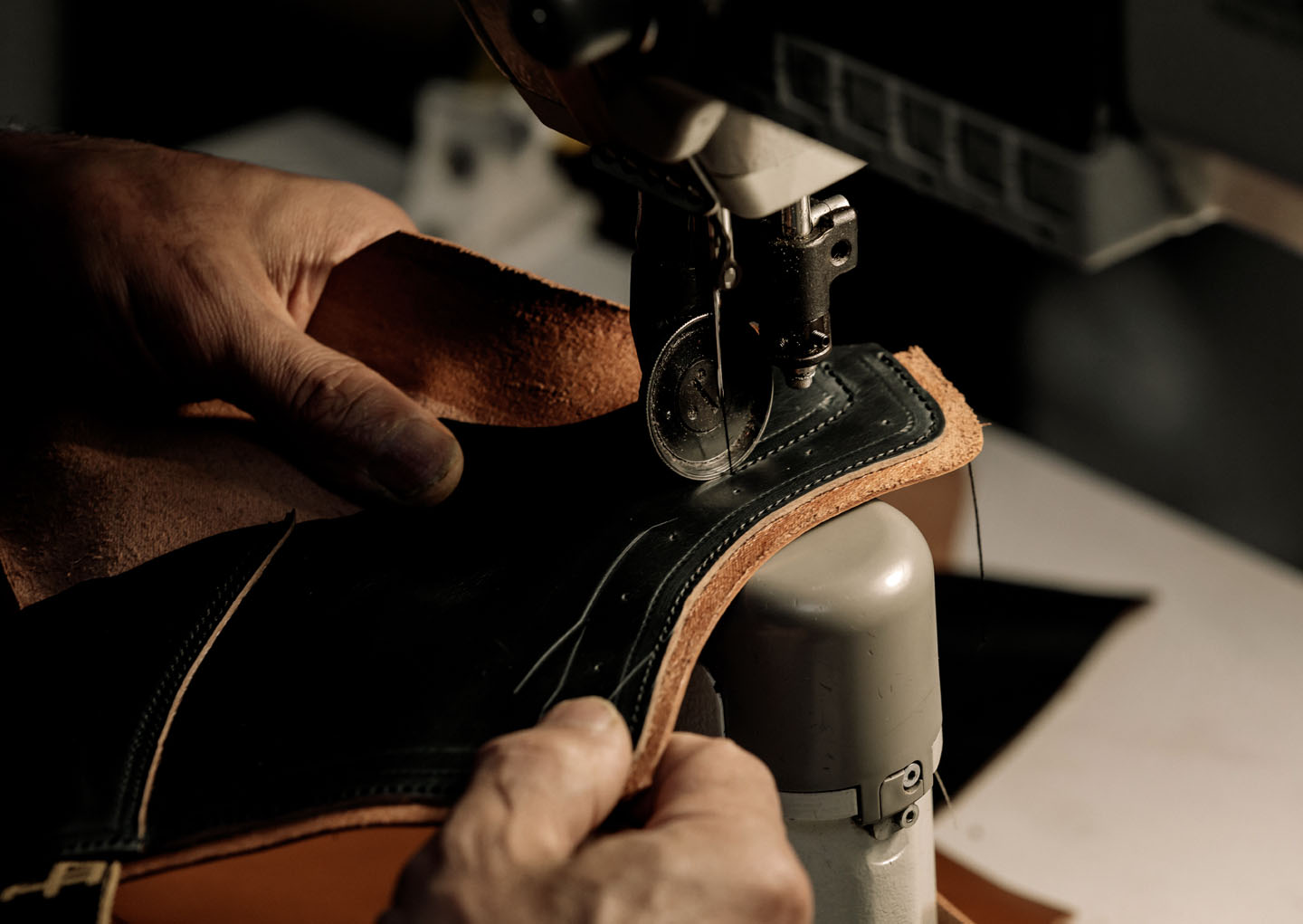
Shafiee sews the liner to a leather upper.
His use of shiny metallic leathers and unusual details showed a western sensibility that appealed to many young people at the time. Soon his footwear became so popular in Tehran that a long wait list formed—but also a backlash, from those who viewed his designs as too American: “I was not seeing the world as they were seeing it.”
In 1990, he embraced his western sensibility and moved to Toronto, eventually becoming a Canadian citizen. He worked with a man in Toronto making “the most beautiful riding boots,” then for a company in Dundas, Ontario, creating orthopedic shoes, where he learned how to construct custom lasts for different foot issues: “wider or bunion or flat foot or polio.”
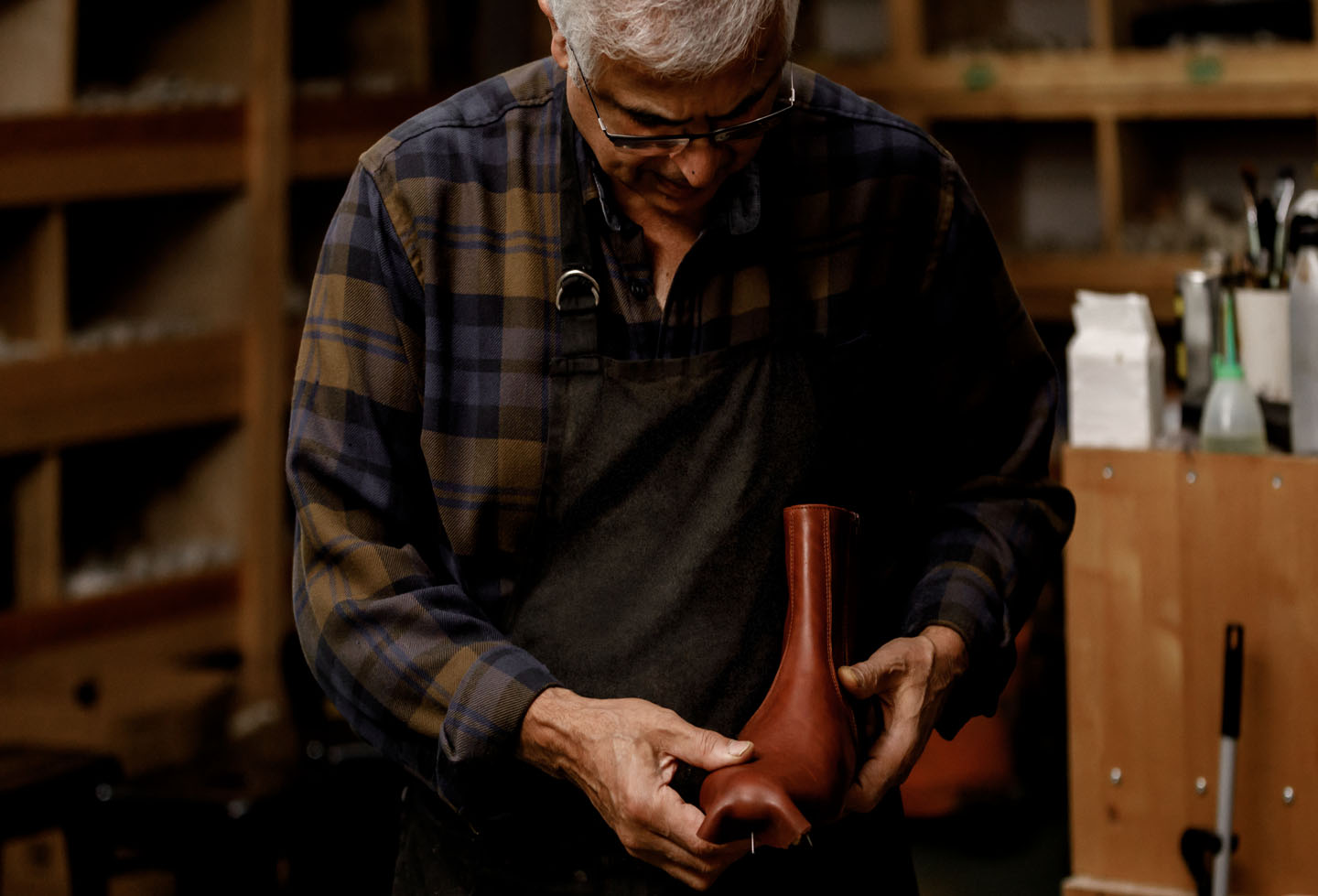
Shafiee sets the sewn upper over a last to make sure it fits.
A marriage and its subsequent breakup sent him back to Iran for a year to reevaluate everything. Eventually he returned to Canada, but wanting to leave his old life behind, he moved across the country. “I came to Vancouver, but I really didn’t want to do shoes,” he says. Instead, he landed a job downtown as a dishwasher at Stepho’s Souvlaki, spending a few years working his way up through various positions in the kitchen. “I became pretty good at it.”
Enticed back into the world of shoemaking by Rino’s Shoes for the Stars, which was then bought out by Dayton Boots (now Wohlford & Company), he also worked with Viberg Boot in Victoria. After witnessing what Dayton and Viberg did right—and realizing what he could do differently—Shafiee felt ready to establish his own company. He and his new business partner set up HD Russell Boots—H for his partner, Hamid; D for his own first name, David; and Russell after his beloved brother.
The shop opened in December 2019. Three months later, the COVID-19 pandemic shut down the world. Two months after that, a car smashed into the new shop, destroying everything. Shafiee’s partner took his share of the insurance money and left. Shafiee, however, decided to remodel the whole place, which he calls “a diamond in the rough” at that point, sinking extra money into fixtures and flooring.
“It doesn’t look like Walmart anymore,” Low says with a laugh. “In a way, it was a blessing.”
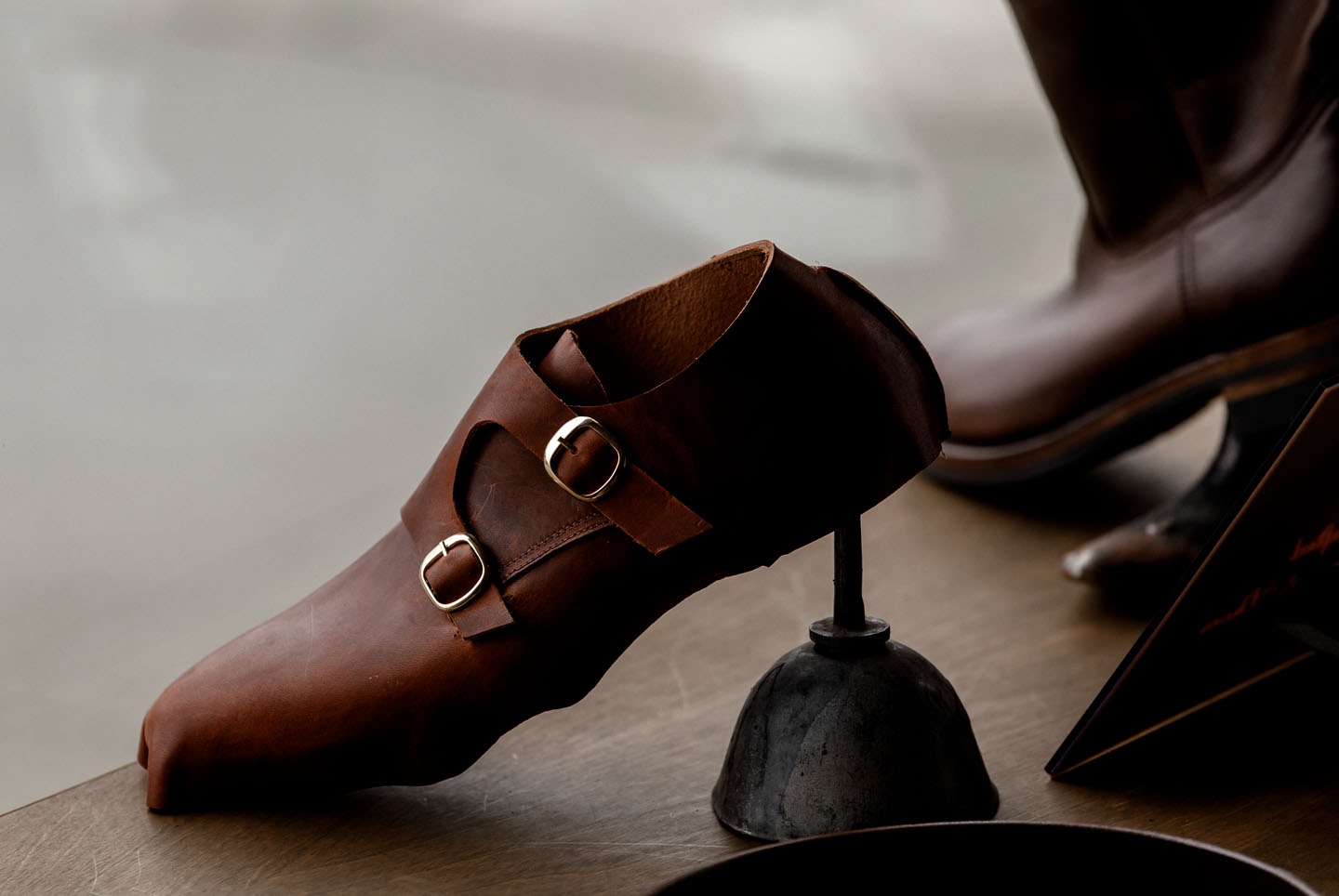
It was a blessing in another important way, too, opening Shafiee up to the possibility of a new business partner. In December 2020, into his life (and store) walked Low. She came in hoping for a belt but ended up ordering a pair of shoes.
When she returned weeks later to pick them up, it was like Cinderella in reverse. “I try them on, and they’re two sizes too big,” Low exclaims. In the chaotic aftermath of the renovation and the business partner’s departure, Shafiee had lost her measurements. He convinced her to let him remeasure her feet—and take her out for dinner. She’s now co-owner of the shop, which in just a few short years has become a valued part of the East Van community.
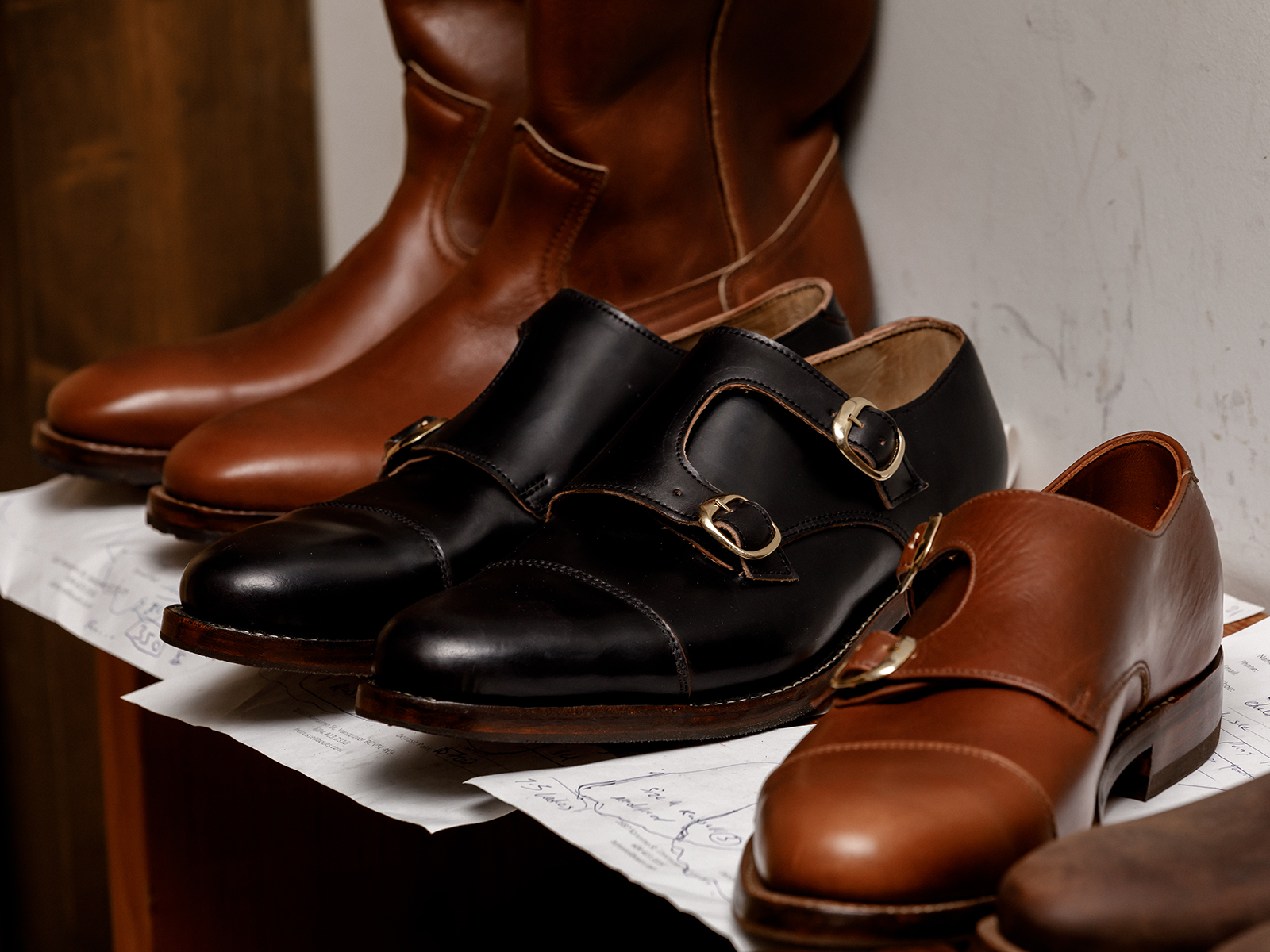
It’s a word Shafiee uses often: community. He laments that most people buy their footwear from international companies instead of local businesspeople. “Your money behind that sale is going to the wrong hands, the wrong people.” He describes how his mother always bought locally, even when the products cost more, and how she repeatedly said, “Keep him in business, because he is a part of this community.”
“My work is my life. My customers are my friends and my family.”
Neighbourhood residents often stop by to chat and see what Shafiee is working on. “My work is my life,” he says. “My customers are my friends and my family.” As if on cue, a regular customer enters the shop to pick up a pair of waterproof wading boots that Shafiee has repaired by adding a new sole, among other things. “They needed a little love,” Shafiee says. The customer is delighted his old boots have been given new life and can be kept out of the landfill, and he promises to send photos of the boots in action on his upcoming fishing trip. He notes that his first purchase from HD Russell Boots was also the first pair of custom shoes he’s ever owned, bought as a 60th-birthday present to himself. “The only problem with the shoes is I don’t want to take them off. I’m not allowed to sleep with them on.”
Most people never get to see the disappearing art of shoemaking. The job has been relegated to overseas factories where workers churn out forgettable footwear designed to last a season. Shafiee’s creations are meant to last a lifetime. They can be polished or resoled, but often all it takes for them to look new again is a good cleaning. Shafiee says, “You can get yourself a Lamborghini, but if you don’t clean it, it’ll look like a Ford.”
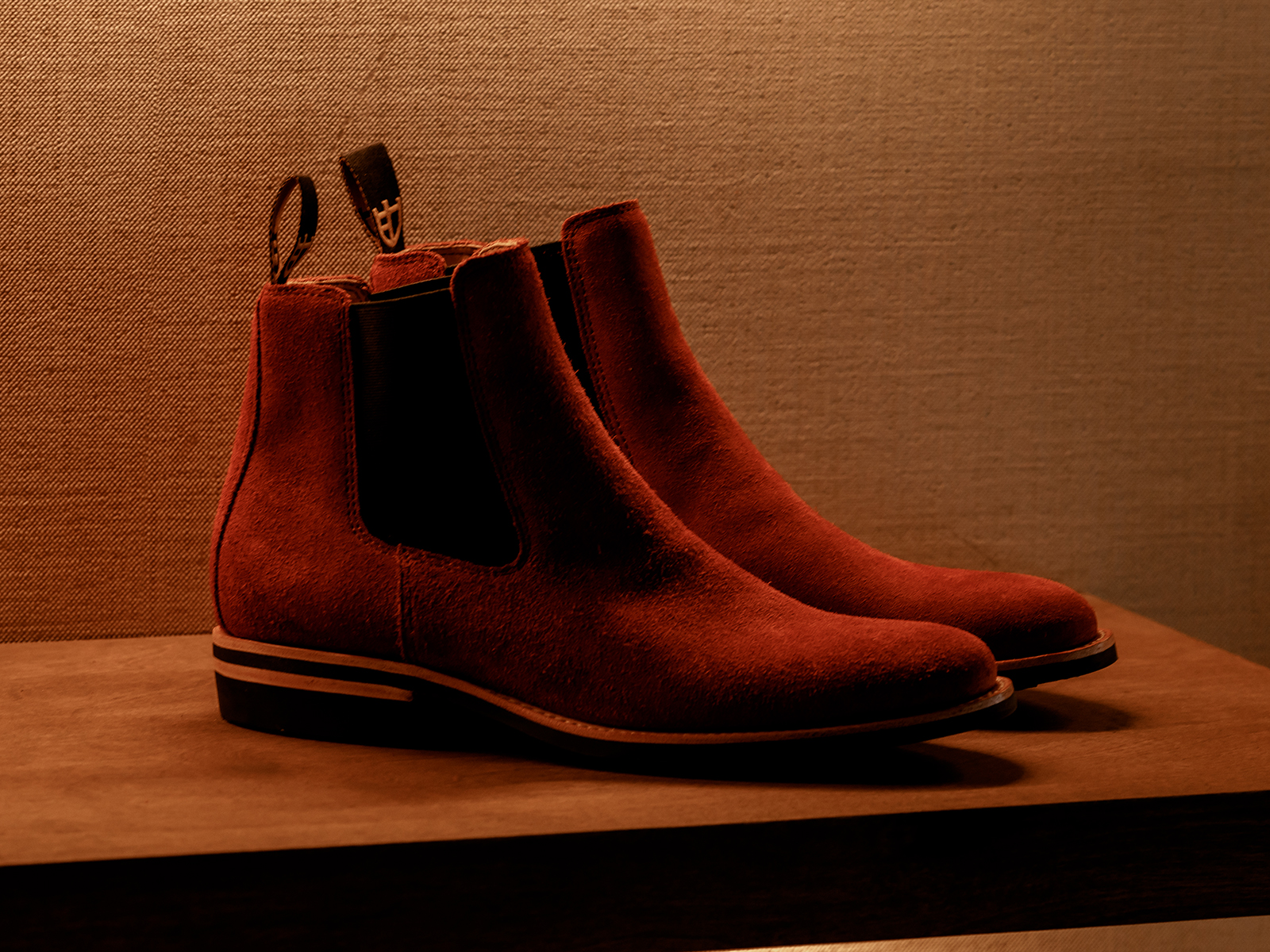
At least one of the unique styles he’s designed over the years has been copied and mass-produced, at greatly inferior quality. He tries to ignore this thievery and get on with dreaming up new styles, rarely leaving the shop: “I have to be here eight days a week.” Never, he says, has he ever had a single unhappy customer. And seeing people wearing his footwear brings him great satisfaction.
“They love it and they appreciate it,” he says. “This is not just shoes. This is art.”
Read more from our Winter 2023 issue.

